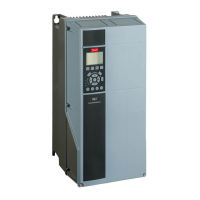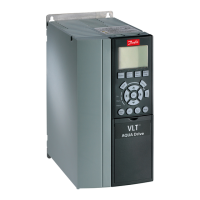Contents
1 How to Read this Design Guide
7
1.1.1 Symbols 7
1.1.2 Abbreviations 7
1.1.3 Definitions 8
2 Safety and Conformity
11
2.1 Safety Precautions
11
3 Introduction to FC 300
15
3.1 Product Overview
15
3.2.1 Control Principle 17
3.2.2 FC 300 Controls 17
3.2.3 FC 301 vs. FC 302 Control Principle 18
3.2.4 Control Structure in VVC
plus
Advanced Vector Control 19
3.2.5 Control Structure in Flux Sensorless (FC 302 only) 20
3.2.6 Control Structure in Flux with Motor Feedback 21
3.2.7 Internal Current Control in VVC
plus
Mode 22
3.2.8 Local (Hand On) and Remote (Auto On) Control 22
3.3 Reference Handling
23
3.3.1 Reference Limits 24
3.3.2 Scaling of Preset References and Bus References 25
3.3.3 Scaling of Analog and Pulse References and Feedback 25
3.3.4 Dead Band Around Zero 26
3.4 PID Control
30
3.4.1 Speed PID Control 30
3.4.2 Tuning PID Speed Control 31
3.4.3 Process PID Control 32
3.4.4 Example of Process PID Control 34
3.4.5 Ziegler Nichols Tuning Method 35
3.5 General Aspects of EMC
37
3.5.1 General Aspects of EMC Emissions 37
3.5.2 EMC Test Results 38
3.5.3 Emission Requirements 39
3.5.4 Immunity Requirements 40
3.6.1 PELV - Protective Extra Low Voltage 41
3.8 Brake Functions in FC 300
42
3.8.1 Mechanical Holding Brake 42
3.8.2 Dynamic Braking 43
3.8.3 Selection of Brake Resistor 43
Contents FC 300 Design Guide
MG.33.BD.02 - VLT
®
is a registered Danfoss trademark 1

